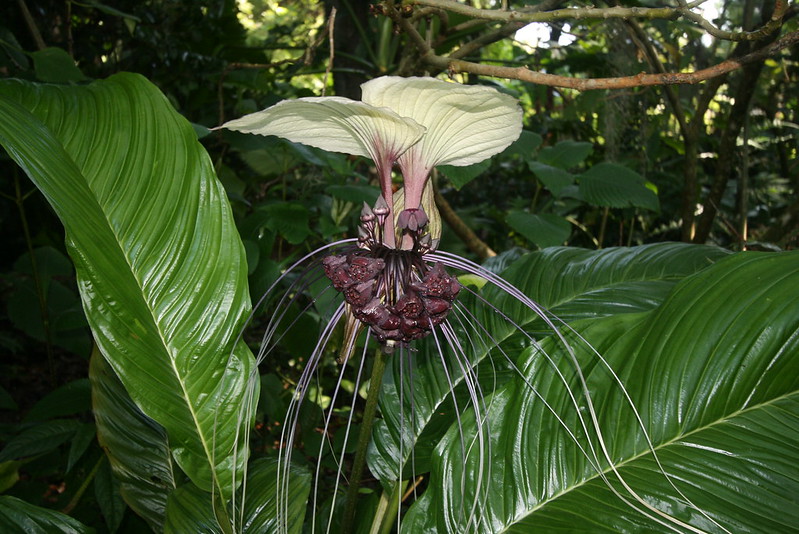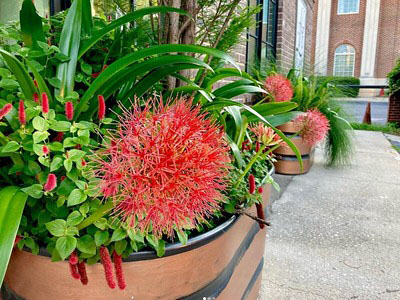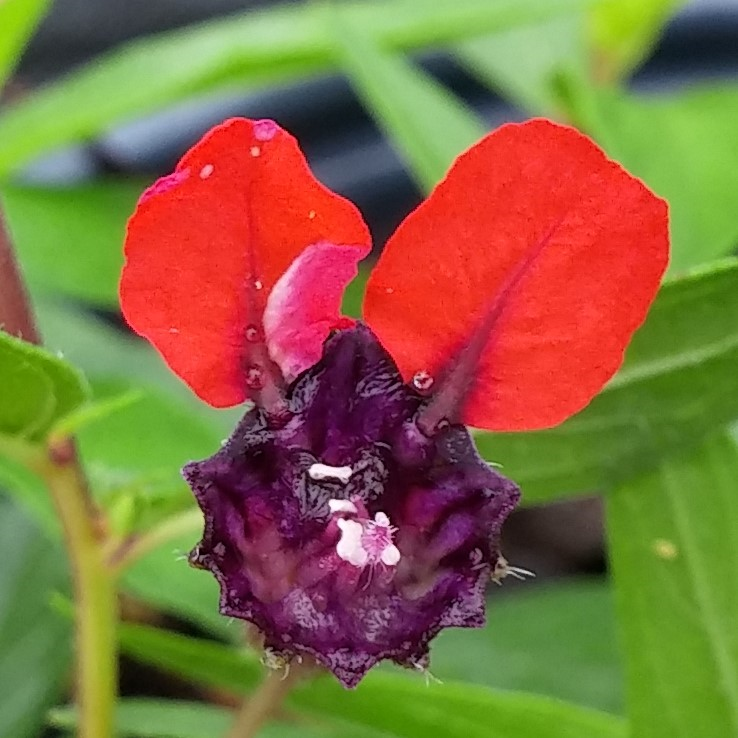Happy Fall!
Happy Fall, everyone! Fall is my favorite time of year. As the summer temperatures begin to wane, I feel invigorated. As the end of the month nears, trees’ leaves change to their usual colors of reds, yellows, oranges, and purples. Throughout our community we will see decorations abound, pumpkins aglow, and the sweet smells of cookouts as we gather around with our friends to watch football. And, of course for my children, October is splendid because of the copious amounts of candy they will consume. But among our gardens and landscape, lurking in plain sight, are plants that make a spooky garden.
Spooky Plants
October is delightfully spooky. As such, we can make our landscapes spooky too! For this week’s gardening article, let us get into the Halloween season by exploring different spooky plants or fungi we can see or plant within our landscapes. Some of the plants we will explore include Bat Flower, Blood Lily, Bat Face Cuphea, Stinkhorns, and Doll’s Eyes.
Black Bat Flowers
Black Bat Flowers (Tacca chantrieri), not a common plant to find in nurseries, get its name from its bat-like flowers. The Black Bat Flowers have a deep purple cluster of flowers that are surrounded by deep purple bracts that look like bat wings and long, threadlike bracteoles that look like whiskers. Similarly, the bracts of Tacca integrifolia showcase a white display rather than purple. Bat Flowers grow best indoors but can be successfully grown outside in the shade. The plant needs consistently moist soil, so be sure you plant appropriately. When happy, Bat Flowers bloom throughout the summer and into the fall.

Blood Lilies
Blood Lilies (Scadoxus multiflorus), on name alone, seem to be a vampire’s favorite plant and are breathtaking. Their bright red globe-shaped flowers erupt from the soil, creating a spectacular display. You may purchase these plants as bulbs or in containers. Blood lilies prefer moist but well-drained soils and can be planted in a container or a part of the landscape with morning or evening sun.

Bat Face Cuphea
Cuphea’s attract pollinators to our landscapes and provide a unique pop of color and texture. The Bat Face Cuphea (Cuphea llavea) is wonderfully, gorgeous – and cute? Its fine-textured foliage provides interest in the landscape, but its small tubular purple flowers with bright red lobes look strikingly like a bat’s face. These perennial plants usually die back in the winter, but they do very well in well-drained, full-sun locations and require very minimal effort to maintain. As a pollinator plant, it is wonderful to see butterflies, bees, and hummingbirds visit this unique plant.

Stinkhorn
Lastly, let us step away from the plant kingdom and into the Kingdom of the Fungi! A spooky fungus we smell throughout our landscapes is the Stinkhorn. Stinkhorns are in the fungi family Phallaceae and they stink! As the stinkhorn’s mushroom erupts from the soil in a vibrant colorful display, your nose is immediately assaulted by its putrid smell. It is disgusting, yet marvelous! Stinkhorns break down organic matter and serve as critical components of our soil and environment. Despite its stink, be thankful when a stinkhorn visits your landscape because that is a good sign of healthy soil.

Your Spooky Garden
It is such a joy when we create our wonderful gardens and landscapes. Therefore, during this spooky time of year be on the lookout for some of the “spooky” plants (or fungi) hidden in our landscapes or our very own spooky garden.
A SPOOKY BLOG SERIES -> Invasion of the Landscape Snatchers
More Information:
UF/IFAS Extension Nassau County
UF/IFAS Extension Blogs – Taylor Clem
Social Media:
 11
11
